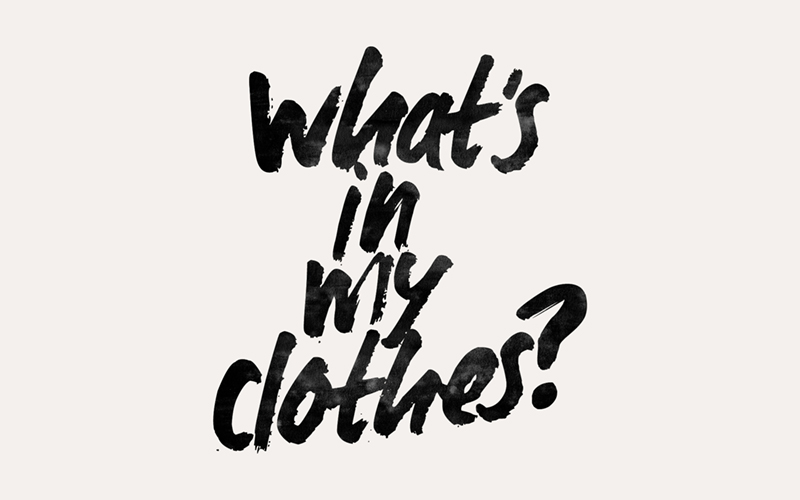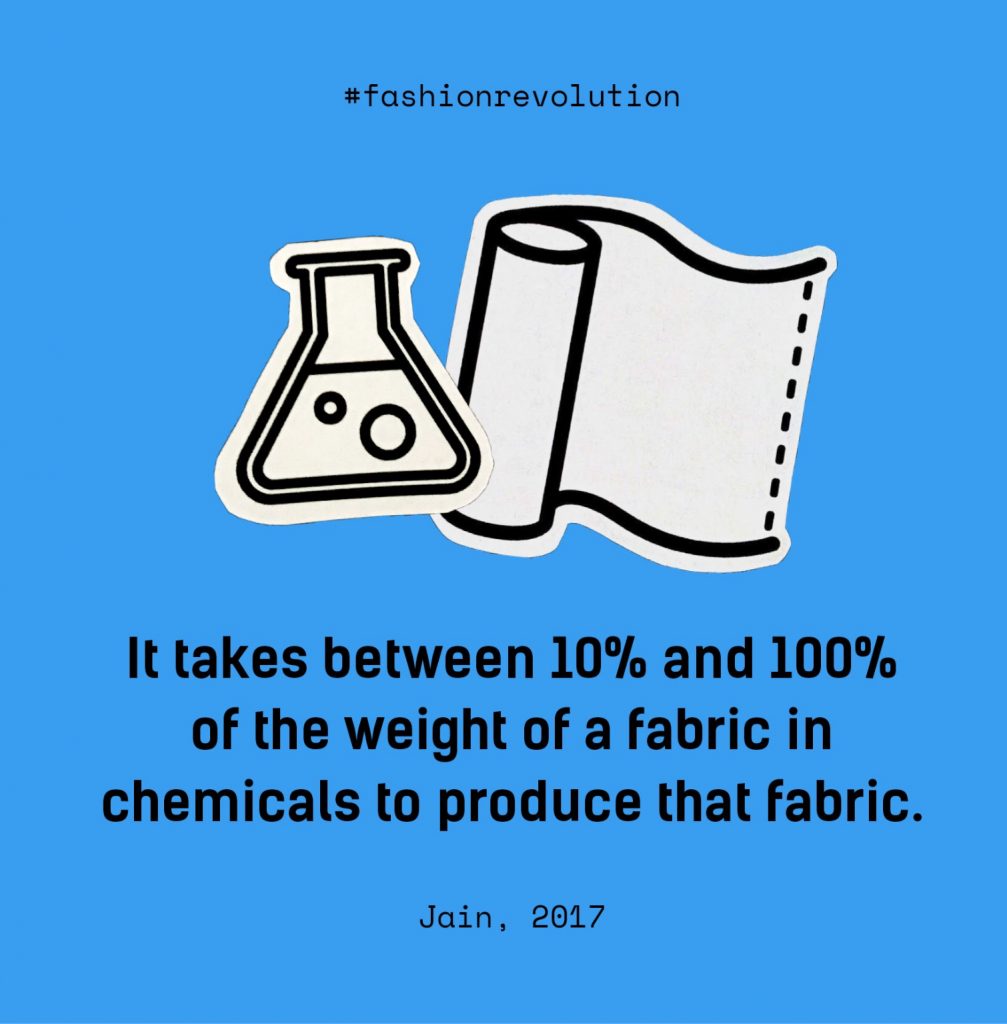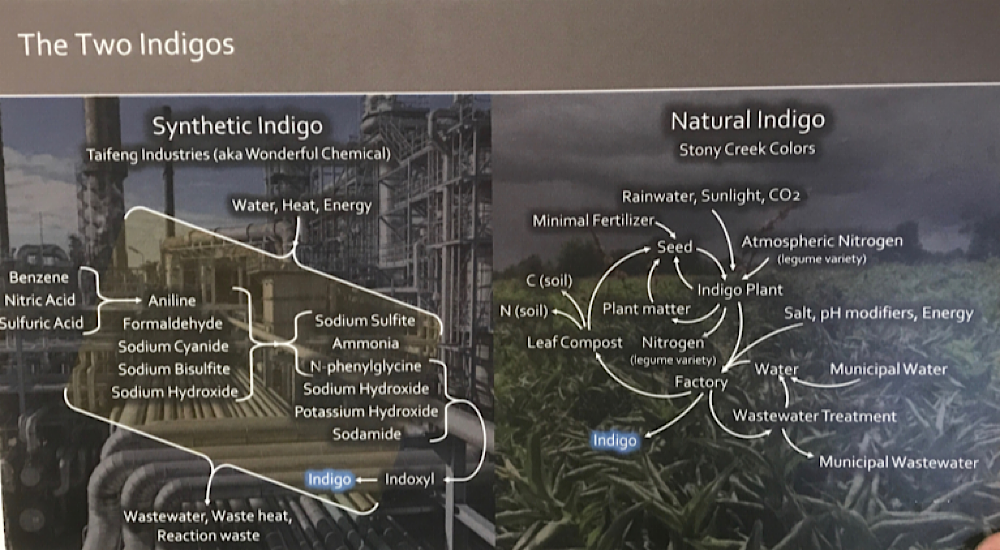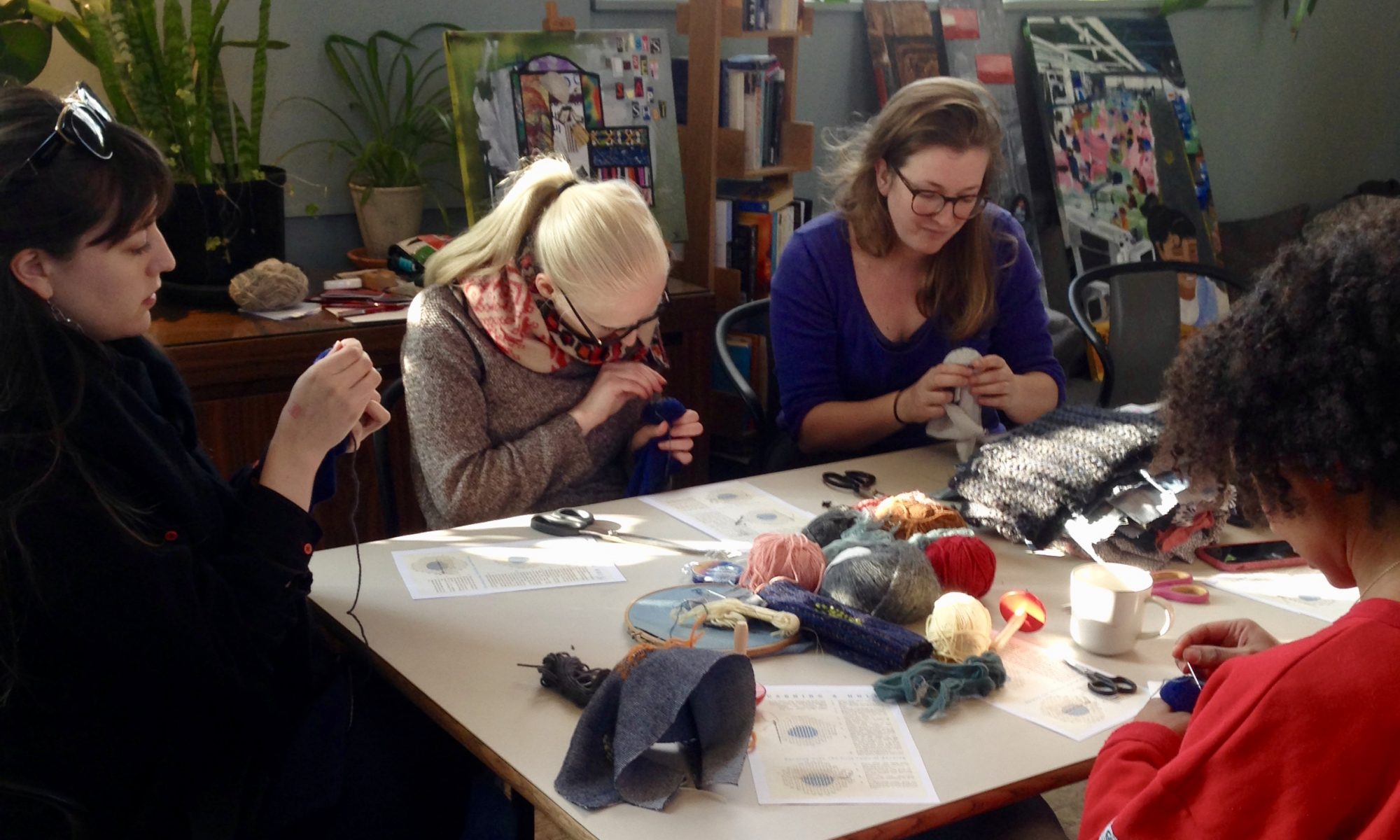‘Two thirds of our clothes contain 100% of chemicals and yet are not disclosed to the consumer. We are breathing, eating, drinking the fibres in our clothes, the majority of which are plastic and chemical’
Peter Gorse of Golf Refugees
Last year, journalist Ray Ritchie interviewed Peter Gorse of Golf Refugees as part of Ethical Brands for Fashion Revolution Week. Peter believes fashion brands should use blockchain technology and fully disclose all the processes; including wages, list of chemicals used to make our clothes. Peter researches textiles and said he has ‘gone past how they look and feel and now I just see a product that is shredding what they are made of constantly’. As 60% percent of our clothes in the UK contain Polyester, ultimately a plastic, this is a frightening thought.

Peter states that there is not enough focus on the process of a fabric, only the fibre it is made from. All the characteristics of our fabrics are achieved by separate chemical treatments. He doesn’t divulge the chemicals involved, probably because there are so many. But he does say around 5% of the chemicals in our clothes are are carcinogenic and hormone disruptive. They should be disclosed and not hidden.
Clothes are sold on their positive aspects, ‘100% cotton’ for example, but Peter says we should realise there is a positive and negative to everything. Once consumers accept this brands are more likely to divulge what chemicals are in their fabrics and clothes. In 2011, Greenpeace launched a ‘Detox’ campaign asking fashion companies to stop polluting waterways with hazardous chemicals from clothing production. Their report in 2018 shows that 80 companies that voluntarily took the pledge to use less damaging chemicals by 2020 and ‘have achieved significant progress.’

According to Sustainable Angle, for Polyester alone, ‘substituting one metric ton of virgin polyester with its recyclable counterpart can reduce toxic substances by up to 90%’. However, Peter considers plastic bottles to be one of the worst plastic items to use as it is turning this PET plastic into a more harmful form due to the shredding of microfibres. It is a difficult debate as the alternative is single waste plastic being put into landfill and ending up in our oceans.
Dying and printing is another process our textiles go through to bring us the vibrant colours and patterns that we love. It is also one of the most polluted processes our fabrics go through. Indigo denim for example, the synthetic dye won’t stick to the fibres without the oxygen being removed, it then has to be put back in at the end of the process. Each step culminates to being damaging to the environment.

This was all interesting but depressing. Other than wearing clothes made from undyed hemp and organic cotton, where do we go from here? Peter suggests:
- Brands need to move to using safer chemicals. Governments need to bring in legislation to make it happen.
- Clothes and textile labels should highlight the chemicals involved, the positive and negative aspects
- Future biology based clothing and dyes made from bacteria and fungi
- Consumers to buy less and look after what we already have
Not buying new clothes and repairing clothes massively reduces their carbon footprint. It is acceptable for jeans to have holes but less acceptable for shirts and t-shirts. We need to learn to live with the holes or learn to patch them. Materials are robust and can last for decades.’
Peter Gorse of Golf Refugees, Ethical Brands for Fashion Revolution, April 2020
